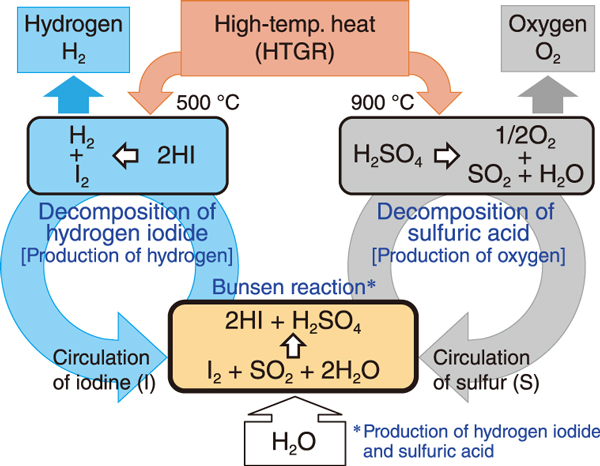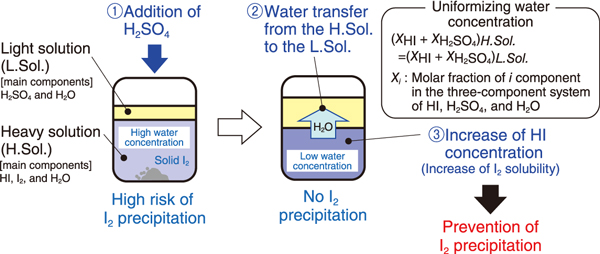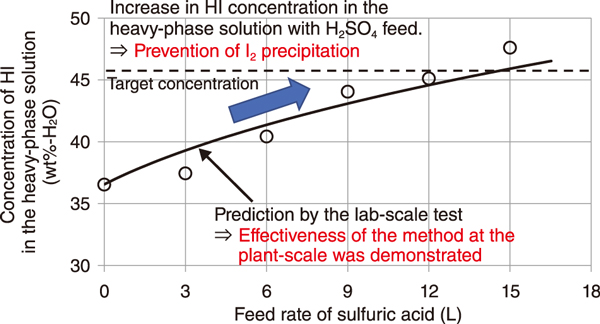
Fig.1 Schematic of thermochemical water-splitting hydrogen production by the IS process

Fig.2 Prevention of I2 precipitation by the sulfuric acid addition and dehydration method

Fig.3 Demonstration of the sulfuric acid addition and dehydration method by using the Hydrogen Production Test Facility
The iodine-sulfur (IS) process is a thermochemical hydrogen production method that combines the chemical reactions of iodine and sulfur to split water to produce hydrogen and oxygen (Fig.1). The Bunsen reaction, which is one of the main chemical reactions in this process, proceeds in the liquid phase, where I2 and SO2 react with water, to produce H2SO4 and HI, respectively. By dissolving excess amount of I2, the solution can be separated into two liquid phases: the “light solution” rich in H2SO4 and the “heavy solution” rich in HI and I2, which are sent to the sections for oxygen production and hydrogen production, respectively.
During the start-up of the process, under transient operating conditions, the water concentration in the Bunsen solution tended to increase because of the difference between the initial and steady compositions of the solution. This increase in water concentration causes solid I2 precipitation and pipe clogging in heavy solutions because I2 is insoluble in water. To achieve stable hydrogen production by the IS process, it is necessary to control and adjust the water concentration to prevent pipe clogging caused by I2 precipitation. However, during plant operation, it is not easy to selectively remove water from a heavy solution, which is a mixture of HI, I2, and water.
We focused on the equilibrium phenomenon, in which the water concentration in the heavy and light solutions becomes uniform, and developed a method, called “sulfuric acid addition and dehydration method,” to control the composition of solutions by adding sulfuric acid to selectively extract water from the heavy solution. Specifically, by adding sulfuric acid to the system at a higher concentration than that of the light solution, the sulfuric acid concentration of the light solution increased (i.e., the water concentration decreased), and water was transferred from the heavy solution with a high water concentration to the light solution with a low water concentration through the interface between the two liquid phases. Thus, the concentration of HI in the heavy solution increased, and the solubility of I2 also increased, thereby preventing solid I2 precipitation and reducing the risk of pipe clogging (Fig.2).
We confirmed that the HI concentration increased with the sulfuric acid supply rate and reached the target concentration with a low risk of I2 precipitation (Fig.3). We also confirmed that the light solution, whose amount in the system increased upon sulfuric acid addition, could be extracted from the solution after the separation of the two liquid phases during operation. Thus, we demonstrated this effectiveness of the method in plant-scale tests. In the future, we will develop an automated system that is more stable over the long-term operation of the IS process.
(Yu Kamiji)